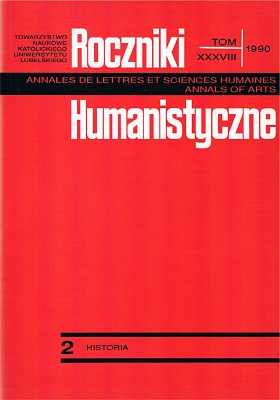Religious Symbols on Gdańsk Medals in the 17th Century
Abstract
In the 17th century Gdańsk was the most vital centre of medal-making in Poland. There worked artists of the likes of Samuel Ammon, Sebastian Dadler, and the Höhns, father and son. It is thanks to them that Gdańsk art of medal-making reached a high European standard. On their medals there dominated the baroque style, the affluence of ornamentation, great picturesqueness of composition as well as the use of perspective. The artists employed various symbols and allegories. The religious motifs play a great role in the symbolism of Gdańsk baroque medal-making. The symbols of God − the Father occur on almost every medal, irrespectively of the person who ordered it. Most often Godhe Father is presented in a tetragrammaton, sometimes the sun, and in the 2nd half of the century there appears the Eye of Providence. An expression of Gdańsk patriciate’s standpoints is the whole series of medals with the symbol of God and People’s Republic as a White Eagle placed over the panorama of the town. This motif symbolizes God’s and Poland’s care of Gdańsk, and it was based on the painting by Izaak van dem Blocke called „The Apotheosis of Gdańsk” which is in the Red Room of Gdańsk town hall. The source of the faith in constant care which God took of Gdańsk was, as it seems, the Protestant type of religiousness of Gdańsk patriciate.
Apart from medals made on a concrete order in the 17th century in Gdańsk, there were also occasional medals aimed to be sold among people. They were souvenirs of family festivals, that is to say, baptismal, wedding and also funeral medals. On the wedding medals there were symbols linked with the sacrament of matrimony: The Holy Ghost as a dove, tetragrammaton as well as the commonly-known symbols of love, marital love, obligations and rights of the spouses.
Copyright (c) 1990 Roczniki Humanistyczne

This work is licensed under a Creative Commons Attribution-NonCommercial-NoDerivatives 4.0 International License.





